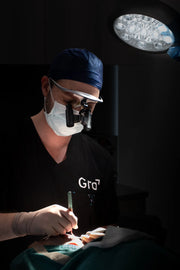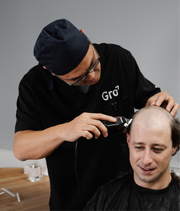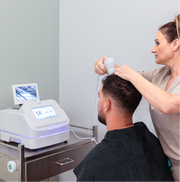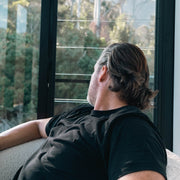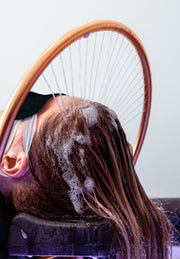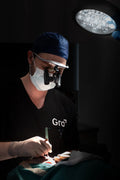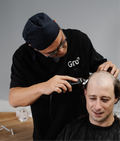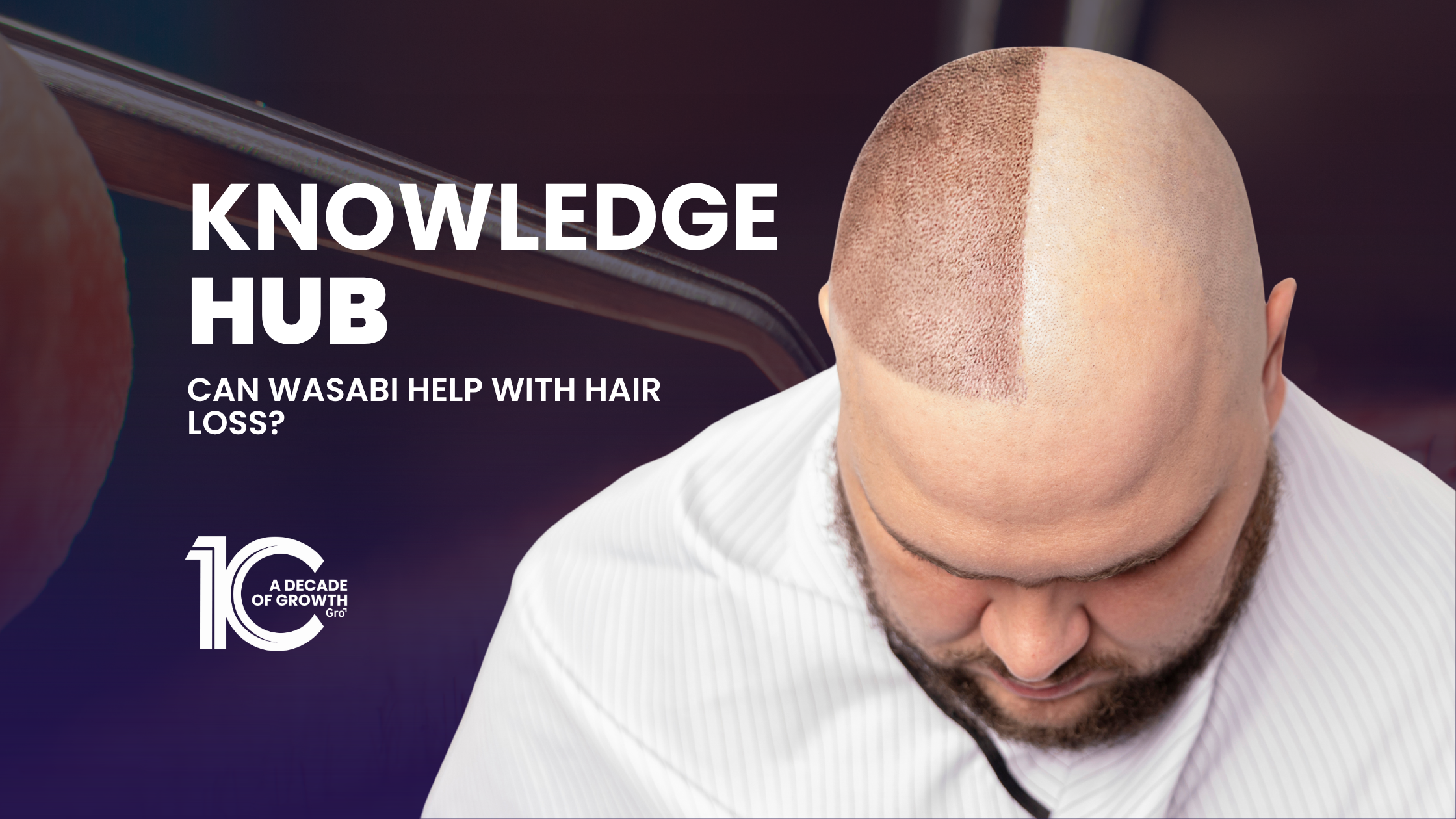Turquoise sea, swaying palm trees and warm sun rays… A tropical holiday and a new head of hair at a low price sounds tempting. Low-cost hair transplants, particularly in Thailand and Turkey, are promoted to men across the world on social media, but the experience is not always equal to what the advertisements portray.
So, is it worth it to travel overseas for savings on your hair transplant procedure? To make an informed choice on the right clinic for you, here are the key factors to consider.
What is a low-cost hair transplant?
The term low-cost hair transplant refers to a non-standardised procedure, typically carried out abroad at an attractive cost. In most cases, there aren't defined protocols and processes for staff qualifications, health and safety, tools, graft distribution, patient monitoring and more.
Some countries specialise in this niche. Thailand, Turkey, Hungary and Tunisia are all common destinations for low-cost hair transplants. Large centres dedicated to hair transplantation have been built and agreements made with airlines and hotels to offer all-inclusive stays. The package seems appealing, but some key aspects of a quality hair transplant may be missing.
5 reasons to beware a cheap hair transplant overseas
1. Typically, it's not an expert doctor who manages the transplant, from the first follicle extracted to the last implanted.
Most often low-cost hair transplants are performed by a group of technicians with no medical training. Using several technicians cuts down the time of the procedure, but may lead to uneven results.
A lack of medical expertise and supervision is a risk in and of itself, but additionally, the results may not be symmetrical and harmonious across the entire head.
2. The procedure tools are rougher, compromising regrowth.
To save time and money, cheaper procedures tend to use automated and/or more aggressive extraction and implantation tools. A low-cost hair transplant is commonly done with motorised punches that have a wider diametre, extracting hairs faster but also increasing the risk of scarring.
Furthermore, when extracting a hair follicle with multiple hairs growing from it, some of the hairs maybe lost in the rough extraction process, leading to lost density in the end result. The mechanical tools, especially older ones, don't account for individual variation in scalp shape and hair angle. Every person has unique hair patterns and scalp shape.
When it comes to aesthetic medical procedures, should saving money be the main objective? Maybe not, but it's the principle behind low cost.
For a hair transplant to look natural, hair extraction must be gentle and imperceptible on the donor area. A wide punch leaves visible scarring that is particularly noticeable under short hair. With automated tools, there's further micro-trauma to the skin caused by the rotating head of the mechanical extractors.
If a transplant is poorly managed, 20-60% of the re-implanted hair will not grow back.
3. Mismanagement of the donor area.
These low-cost clinics know the consequences of the aggressive extraction on the rate of regrowth, so they encourage patients to opt for a higher number of hairs to compensate for the shortfall. In reality, a lower number of hairs would suffice if so many weren't lost in the process! This has irrevocable consequences on the donor area.
Careful management of the donor area is essential to keep the option open for a second transplant in the future, especially when the patient is young. Contrary to what some believe, the donor area doesn't regenerate.
So, it's crucial to avoid extraction techniques that mistreat the donor area, especially harvesting more hair than the patient needs.
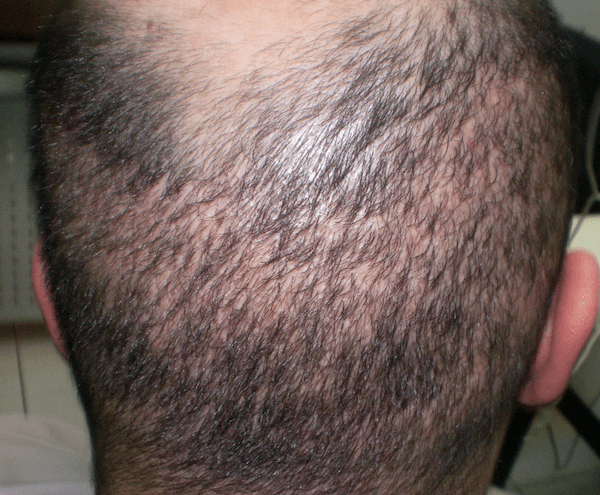
Over-harvested donor area after low cost hair transplant.
4. A dodgy sales process: low-cost clinics encourage people to evaluate the price of a transplant based on the number of hairs implanted.
The patient, who has often drawn on their savings for this all-important hair transplant, makes a quick calculation and on the surface, the lower price makes it look like a great deal. But, there's more to it below the surface.
Offering more hairs for a lower price is misleading. It bases the comparison on the total number of hairs implanted, but if the follicle survival rate is as low as 40%, the patient ends up losing money (and valuable donor hairs).
The attractive packages with several thousand extra hairs don't tell the whole story – aggressive techniques and serious damage to the donor area. Low-cost clinics take advantage of people who don't know the fine details of hair transplant techniques and market aggressively on price. Moreover, the clinics have an interest in selling the highest possible number of hairs, even when it's not necessary, spoiling the donor area for no reason.
5. The method of implantation is the same as in FUT or classic FUE.
Hair transplants have changed drastically over the years, but many low-cost clinics still use older methods of implantation. Incisions or slits are made on the scalp using sharp objects (a blade, a scalpel and sometimes even the tip of a pair of scissors), and grafts are then inserted with forceps.
This technique gives less-than-ideal results for many reasons. It's difficult to create density because the grafts can't be implanted that close to each other. When healing, the incisions often leave an unsightly orange peel appearance on the skin.
6 questions to ask yourself when choosing a hair transplant
A hair transplant is a medical procedure that requires meticulous know-how, continuous training and artistic sense. When considering hair transplant options, ask the clinic lots of questions, so you have the information you need in order to make an informed decision. Here are some examples.
1. Is the extraction method gentle on my scalp and my follicles? Will it leave visible scars?
2. Are the grafts implanted without trauma or with prior incisions and forceps?
3. Who will do my transplant from start to finish?
4. Will the end result look natural and dense? Will it be durable?
5. Are there follow-up appointments? What if retouching is needed?
6. Will my donor area allow me to have a second procedure later if my hair loss evolves?
Why choose a reGro® hair transplant
reGro® is Australia's leading hair transplant experience, creating a hairline suited to your features and hair patterns. Here's why you and our hair will be in good hands with us.
1. Procedures are performed from start to finish by doctors who have been trained to ensure consistency and quality.
Our doctors go through rigorous training and practice at our in-house training academy to ensure all our clients get the same great results that we're known for.
2. Minimum handling of hair follicles results in high survival rate.
We consistently achieve over 95% survival rate, compared to industry rates that fluctuate between 50-90%. That means you need less donor hairs to get good coverage - this is important as only the surviving hair is worth paying for!
3. Gentle technique for natural and undetectable results
reGro® is the most delicate and refined hair transplant procedure on the market. The results are natural with no detectable scarring.
- No scalpels
- No stitches
- Pain free
- No detectable scarring
4. Short recovery time
Thanks to our procedure tools and methods being so gentle on the scalp, the recovery time is also faster. Depending on their line of work, most patients take just one week off work. With no scarring, most people won't be able to tell you've had a hair transplant as soon as the scabs fall off around the 2-week mark!
5. Our clinics are the only in Australia that use HypoThermosol™ in our hair transplants.
Between extraction and implantation, we store the donor hairs in HypoThermosol™, a liquid that's also used in organ transplants. That's why we're able to bring the follicle survival rate up to nearly 100%, which is unparalleled in the industry.
5. Our doctors are trained in natural-looking hairline artistry.
Hair transplantation is not just a science, but an art as well. Not only do our doctors have a deep understanding of the medical and mathematical aspects of hair transplants, they're also trained in the art of creating completely natural-looking hair transplants. At Gro Clinics, the implantation of hair follicles is done with a specialised tool that gives our doctors full control of the angle, direction and depth of the implanted hair.
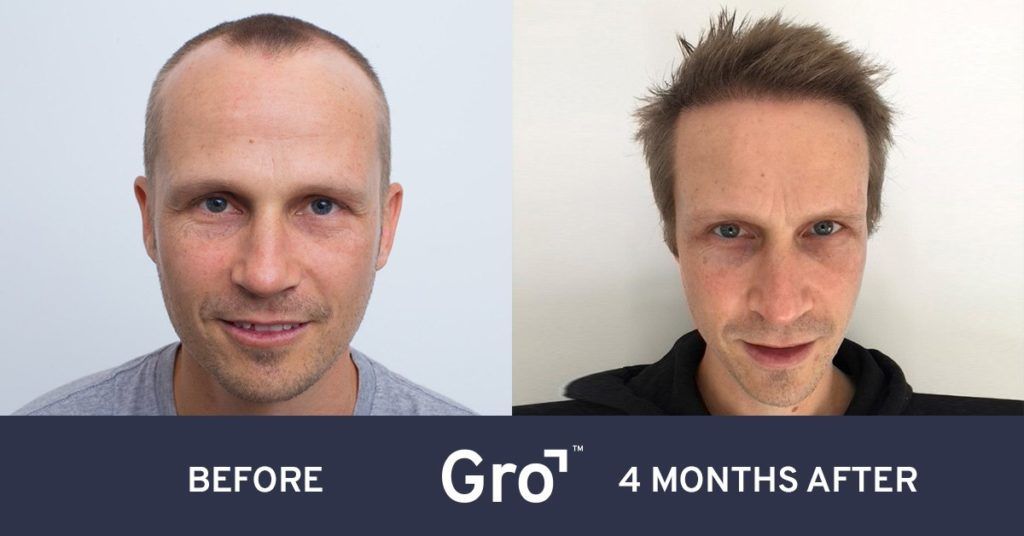
See more before & after photos.
Take the first step by booking a consultation
For personalised information, book a consultation with a Hair Growth Specialist online or in person at one of our clinics. Our clinics are located in Brisbane, the Gold Coast, Perth, Sydney and Melbourne. During your consultation, you can ask all the questions you have and find out what results we can achieve for you.
Ready to take the next step? We have clinics all around Australia and New Zealand including:

